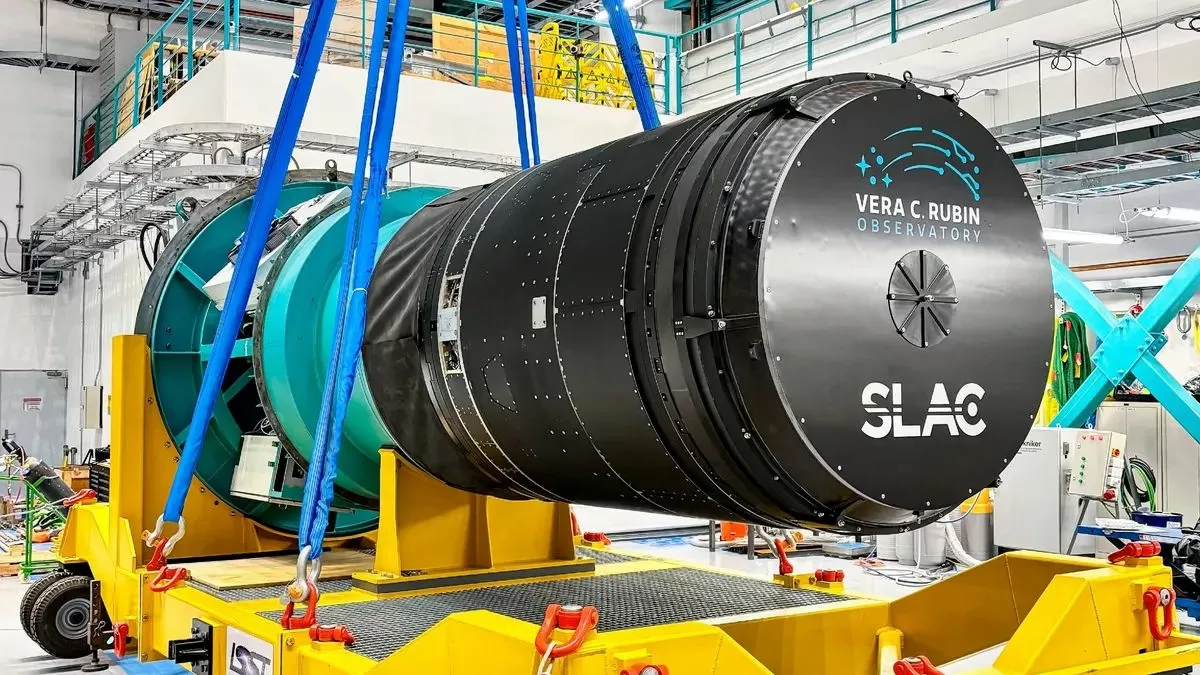The Vera Rubin Observatory, located in Chile, has recently installed the world’s largest digital camera for its upcoming sky survey. This monumental achievement marks a significant milestone in the field of astronomy and is set to revolutionize our understanding of the universe.
The camera, known as the Legacy Survey of Space and Time (LSST) camera, is a state-of-the-art instrument that boasts an impressive 3.2 gigapixels. To put this into perspective, the average smartphone camera has around 12 megapixels. This makes the LSST camera over 250 times more powerful, making it the largest digital camera ever built for astronomical purposes.
The installation of this groundbreaking camera is a result of years of planning and collaboration between scientists, engineers, and technicians from around the world. The LSST camera is a joint effort between the National Science Foundation (NSF), the Department of Energy (DOE), and private partners. It is named after the late astronomer Vera Rubin, who was a pioneer in the study of dark matter and a strong advocate for the LSST project.
The primary goal of the LSST camera is to conduct a 10-year survey of the entire visible sky, capturing images of over 20 billion galaxies and stars. This survey will provide astronomers with an unprecedented amount of data, allowing them to study the evolution of the universe, dark matter, and dark energy in greater detail than ever before.
One of the most exciting aspects of the LSST camera is its ability to capture images of the night sky in multiple wavelengths. This means that it can detect not only visible light but also infrared and ultraviolet light. This will provide astronomers with a more comprehensive view of the universe, allowing them to study objects that are invisible to the human eye.
The LSST camera is also equipped with a powerful telescope, which will allow it to capture images of the sky with incredible precision. It will be able to cover an area of the sky 40 times larger than the full moon in a single shot. This will enable astronomers to study objects in the night sky with unprecedented detail and accuracy.
The installation of the LSST camera is a significant achievement for the Vera Rubin Observatory and the field of astronomy as a whole. It is a testament to the dedication and hard work of the scientists and engineers involved in this project. The LSST camera is a prime example of how collaboration and innovation can push the boundaries of scientific discovery.
The LSST camera is not only a technological marvel but also an economic boon for the local community in Chile. The construction of the camera and the observatory has created hundreds of jobs and has brought in millions of dollars in revenue. It has also provided opportunities for local students to get involved in the project and learn about astronomy and technology.
The LSST camera is expected to be fully operational by 2023, and the sky survey will begin shortly after. The data collected by the camera will be made available to scientists and the public, allowing anyone to explore the wonders of the universe. This will not only advance our understanding of the cosmos but also inspire future generations to pursue careers in science and technology.
The installation of the LSST camera is a significant step towards unlocking the mysteries of the universe. It is a testament to human ingenuity and our insatiable curiosity to explore the unknown. The Vera Rubin Observatory and the LSST camera will undoubtedly leave a lasting impact on the field of astronomy and pave the way for groundbreaking discoveries in the years to come.
In conclusion, the installation of the world’s largest digital camera at the Vera Rubin Observatory is a momentous occasion that has captured the attention of the scientific community and the public alike. It is a testament to the power of collaboration and innovation and a reminder of the endless possibilities that lie ahead in our quest to understand the universe. The LSST camera is a shining example of what can be achieved when we push the boundaries of technology and work towards a common goal. The future of astronomy is brighter than ever, and the LSST camera is leading the way.

